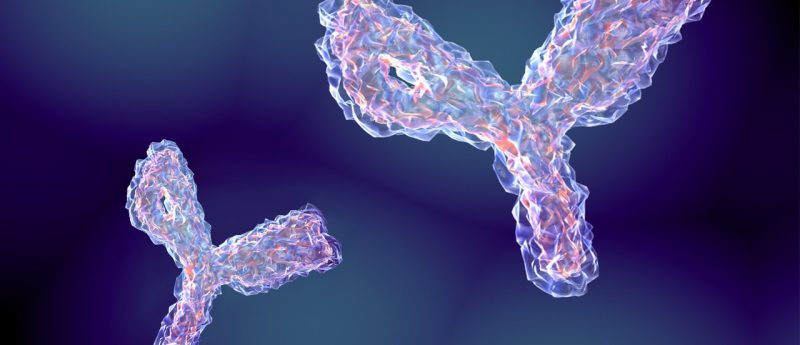Webinar Q&A follow-up: LC-MS/MS-based quantitative monitoring of protein biotransformation

Thank you everyone who attended our live webinar on LC-MS/MS-based quantitative monitoring of protein biotransformation. Below are some responses to the questions posed during the live event that we did not have time to answer. We hope this is a useful resource and thank our webinar attendees and our speaker, Nico van de Merbel, for their time.
Q&A follow-up
1. Does protein biotransformation alter the pharmacological activity?
Just as for small-molecule metabolism, this may or may not be the case. It depends on the actual nature and site of the biotransformation.
2. Could biotransformation of intact proteins be monitored by HRMS?
In principle: yes, but if the change in molecular mass is small compared to the mass of the protein, it may be difficult or impossible to distinguish the modified form from the native form due to the occurrence of natural heavy isotopes.
3. One of the major problems in using signature peptides is that one is never 100% certain there are not other proteins in the biofluid that have the very same signature peptide. Then, could this method provide wrong results?
First of all, a signature peptide is selected that is unique for the protein of interest and that does not occur in other plasma proteins, as determined by database search and BLAST sequence alignment. This is further investigated in practice by analyzing blank plasma and pre-dose samples to ensure there are no endogenous peptides present.
4. Is there a reason Y7 was chosen in Q3?
The Y7 ion was the most intense fragment.
5. Are you not afraid of polluting the MS using tween during digestion, without removing it prior to injection?
In our experience, contamination by tween is no particular problem.
6. Is isoaspartate and aspartate chromatographically resolved?
Yes, there is chromatographic baseline separation between the aspartate and isoaspartate containing peptides.
7. On slide 27, other than an avidity effect at ELISA, can it also be due to other modifications that are not monitored at LC-MS/MS but occurring during the plasma incubation?
This is indeed a theoretical possibility.
8. Deamidation of N55 leads to no response for ELISA. Is the capture target? Would the isoN still bind to target in vivo and be active?
This is as yet unknown for trastuzumab, but for other monoclonal antibodies it has been reported that deamidation in the CDR leads to a considerable loss of activity.
9. What information is MS/MS giving that ELISA does not for the antibody quantification? Could they be complementary?
LC-MS/MS is capable of determining the total concentration of a protein, whereas ELISA probably measures the free fraction if no further sample treatment is done. LC-MS/MS can also distinguish between different biotransformation products. The techniques are therefore certainly complementary.
10. Have you observed deamidation leading to (causing) aggregation?
No.
11. Have you tried SIL-protein instead of the SIL-peptide as the IS?
Not for trastuzumab, but we did for other proteins.
12. Why is tween added at the end of digestion?
It is actually added before the start of the digestion, to improve solubility of the peptides and prevent adsorption during and after digestion.
13. pH 7 digestion efficiency looks good; did you also evaluate use of a detergent like RapiGest? This was published some years ago with respect to deamidation and efficiency of digestion at pH7.
We have not tested this.
14. Is there any way to distinguish between free mAb and bound mAb (e.g., ADA-binding)?
For non-mAb proteins, ADA-bound and free protein can be separated by treatment with protein A/G that binds all IgG in a plasma sample and therefore also ADAs and any protein bound to it. For mAbs, this does not work because the mAb will also bind to protein A/G itself. Possible alternatives are separation by size exclusion chromatography and isolation of the free form by an immunocapture step.
15. Did the organic solvent during digestion deactivate enzyme activity?
Not the low percentage that we used.
16. How were deamidated species separated by Q1 unit resolution? I assume unit resolution is 0.7da?
The deamidated and non-deamidated peptides could not be completely resolved by unit mass resolution, because their m/z values were 0.5 unit apart. Unit resolution is indeed 0.7 amu. However, the deamidated species had chromatographic baseline separation.
17. What database did you use to compare peptide and select signature peptide?
The BLAST sequence alignment tool was used for signature peptide comparison to background proteome.
18. To what extent did you observe variation in digestion efficiency, either between different analyses or between protein precipitated at later time points in a time series incubation?
The variation in digestion efficiency is small, as demonstrated by single-digit values for precision and accuracy within and between lots of plasma.
19. On what criteria did you choose an AA in the signature peptide?
In this case, the signature peptide had to contain the deamidation sensitive Asn55
20. Have you tried SPE purification?
For trastuzumab this was not necessary because of the relatively high concentrations. For other proteins, we have used SPE both for the intact protein and for peptides.
21. For the in vitro plasma stress test, the pH was “set at 8”. Was it buffered to 8? Plasma typically shows a rise in pH to more alkaline upon storage because the CO2 buffer system is not functioning like in vivo.
The pH was set at 8 by adding base. This was indeed done to mimic the in vitro situation of a rise in pH upon storage.
